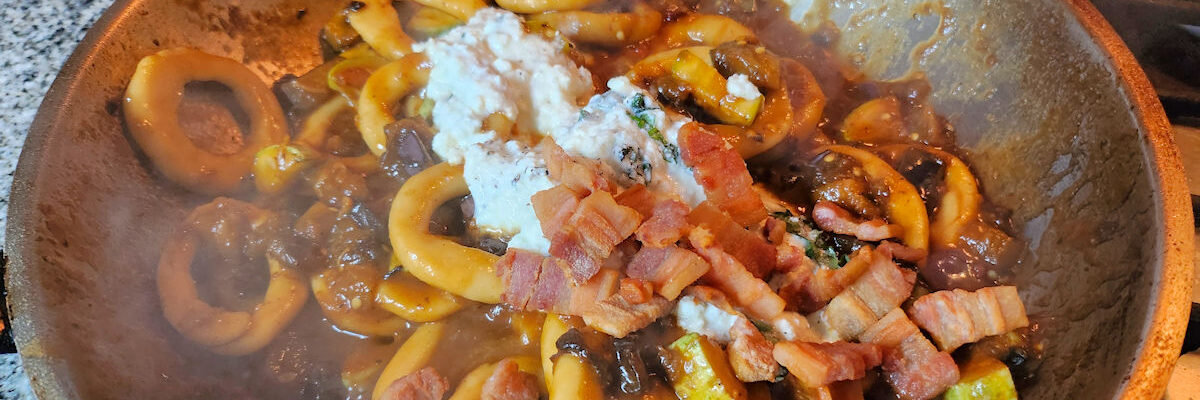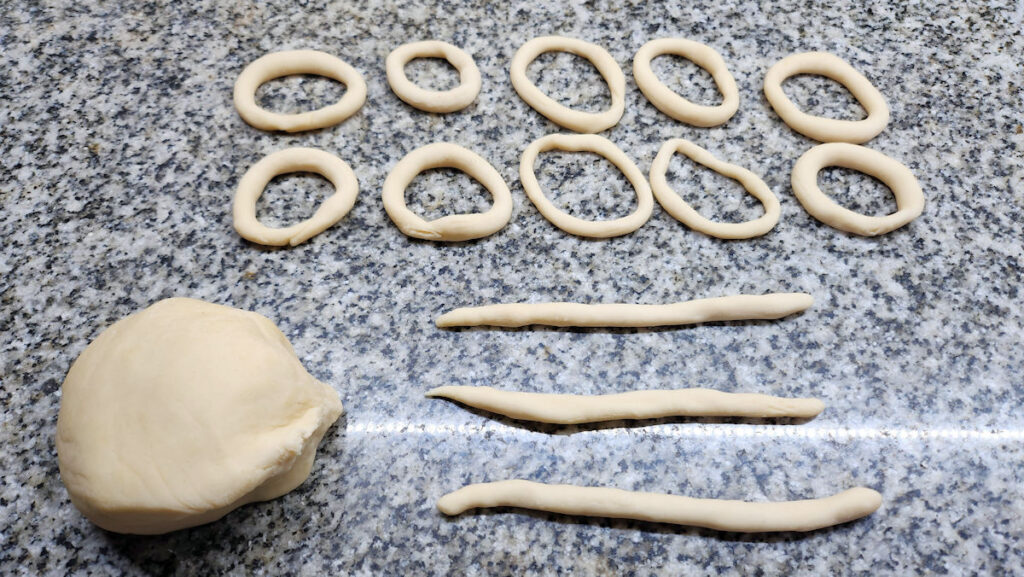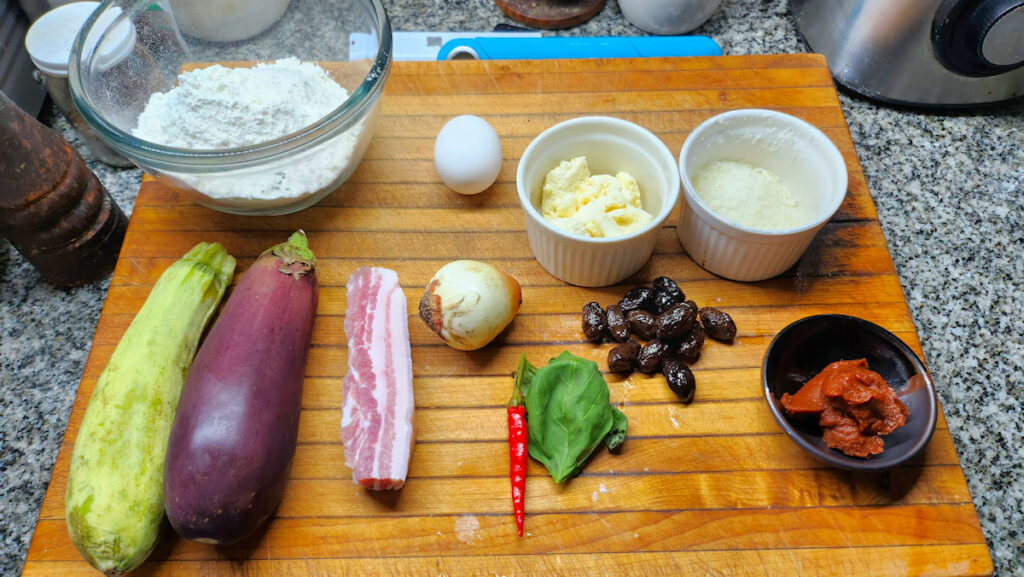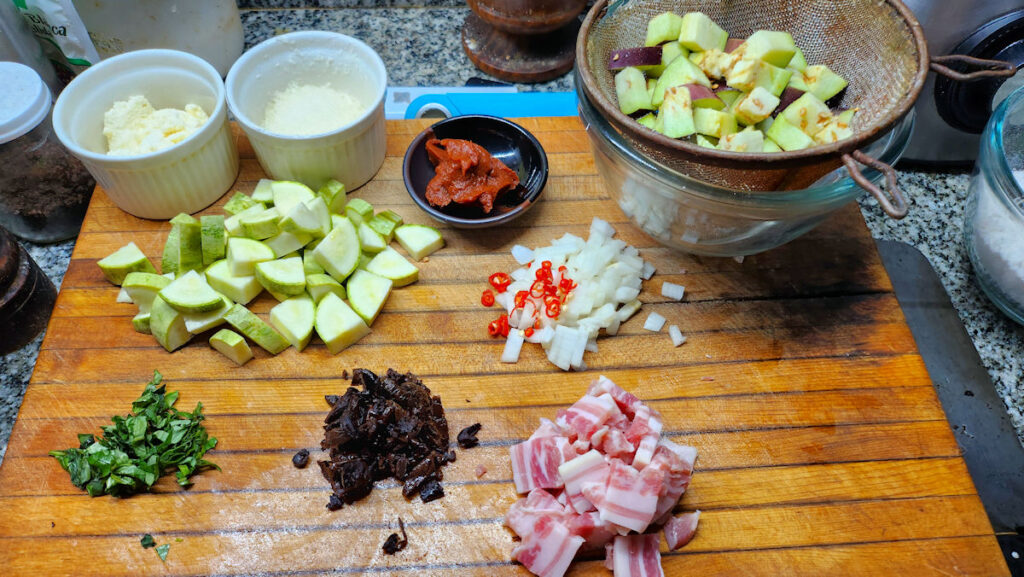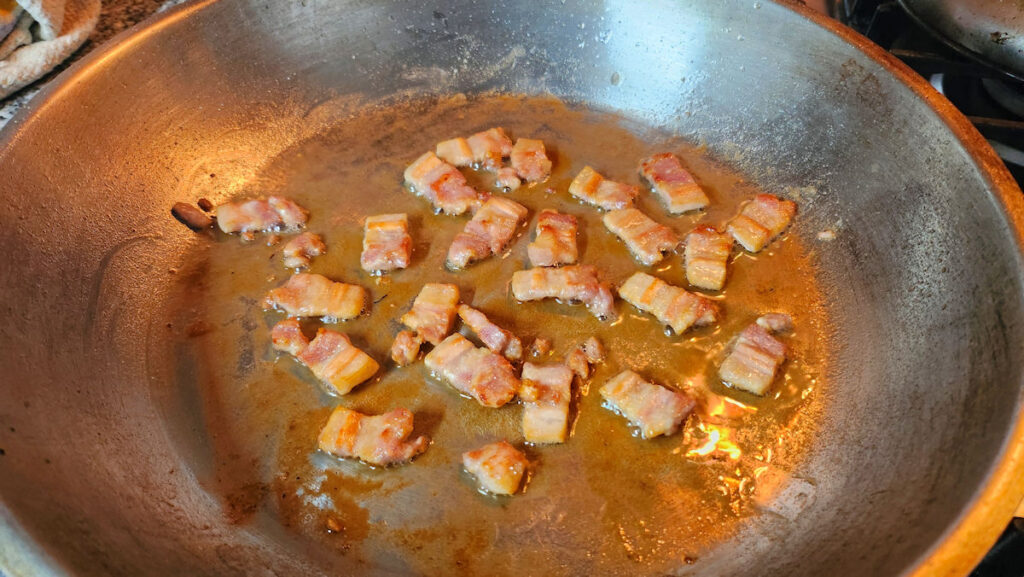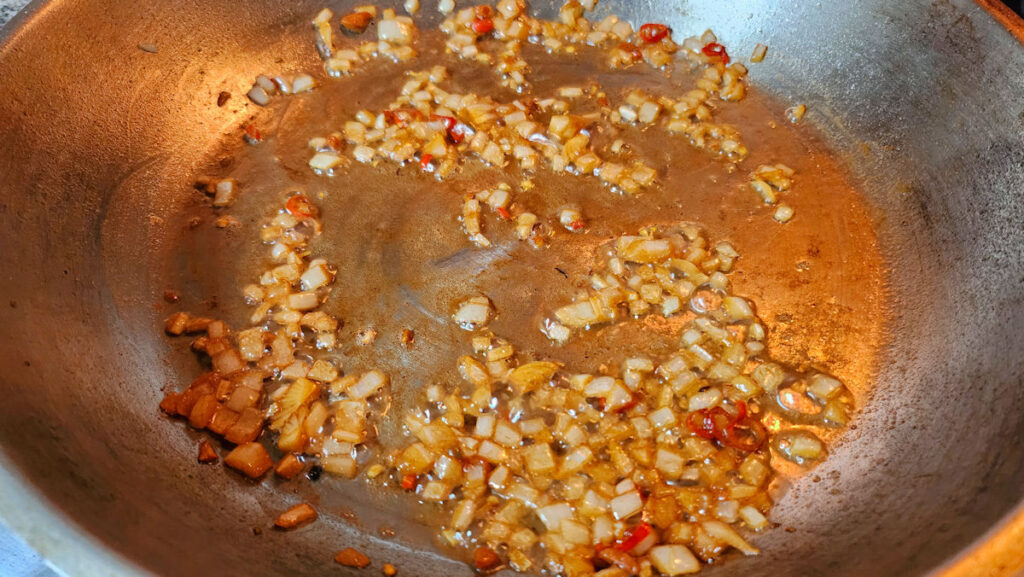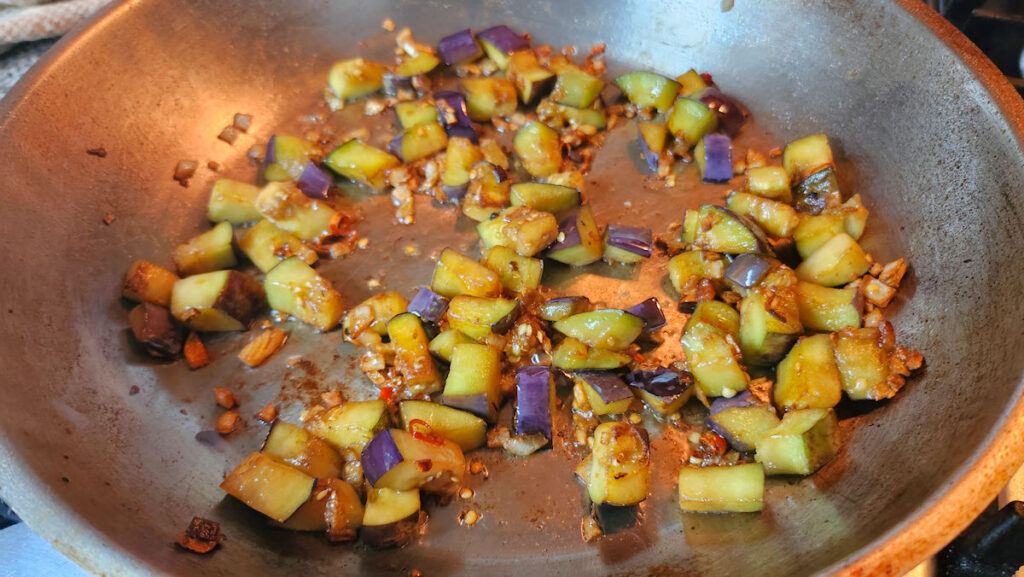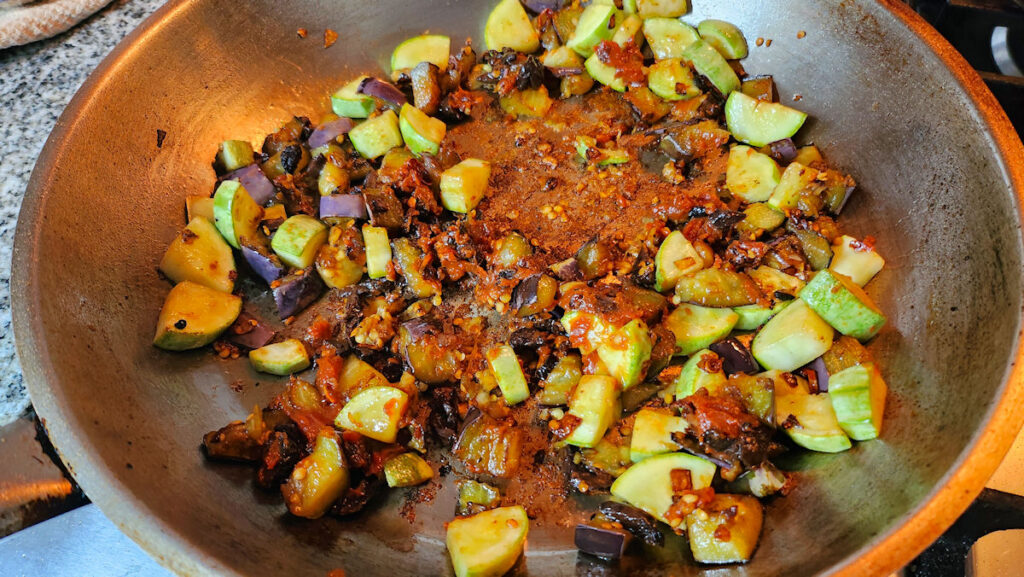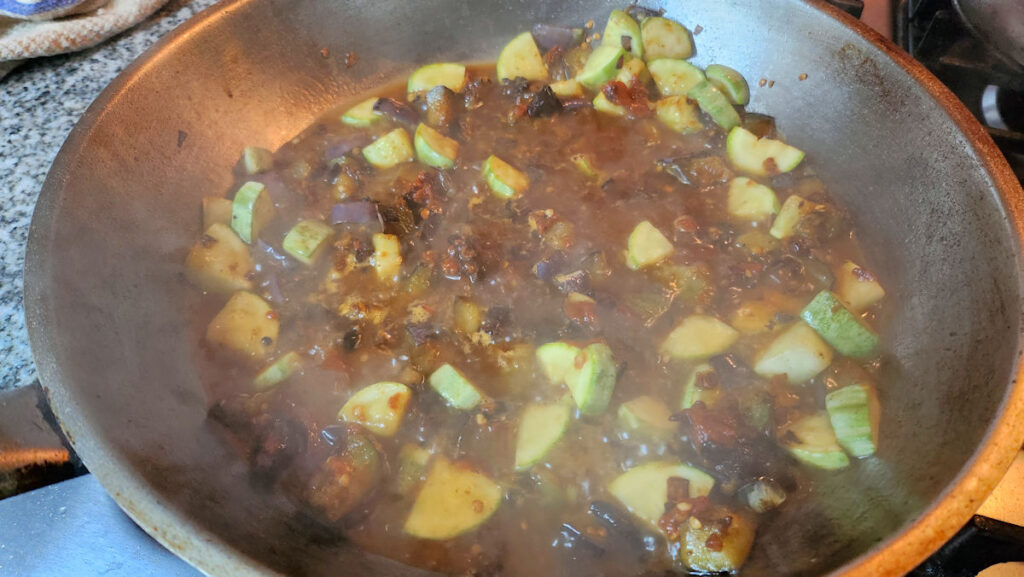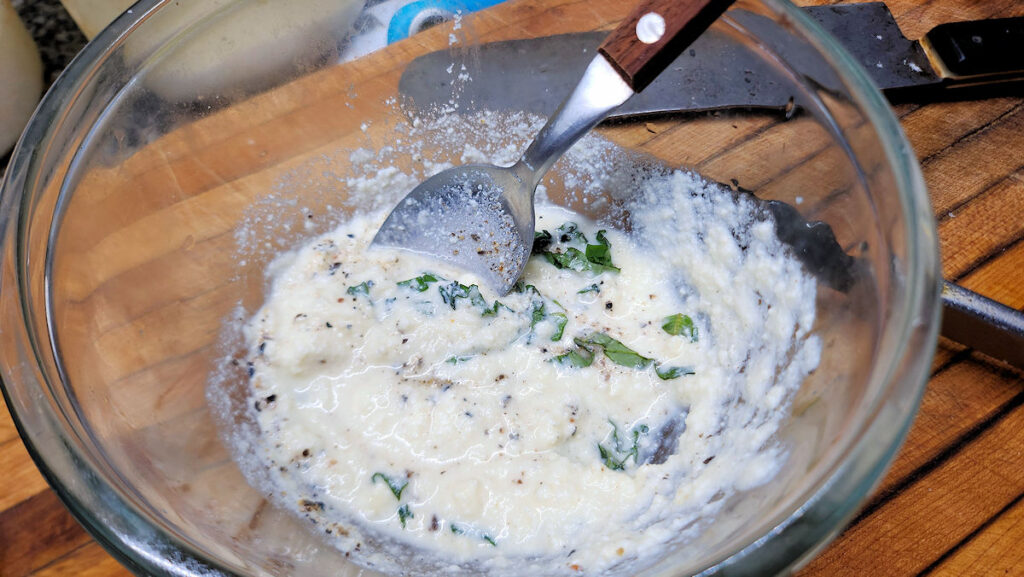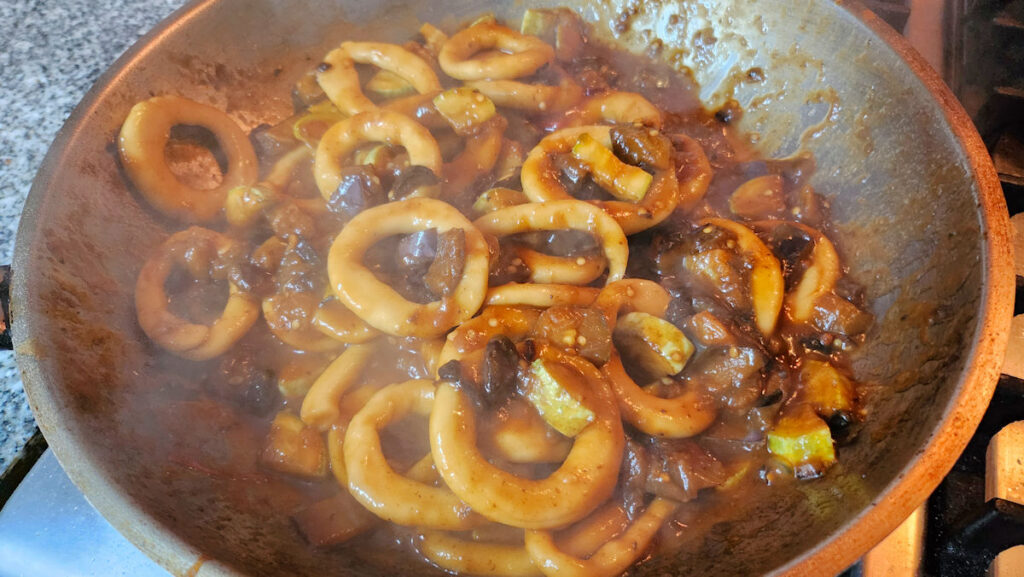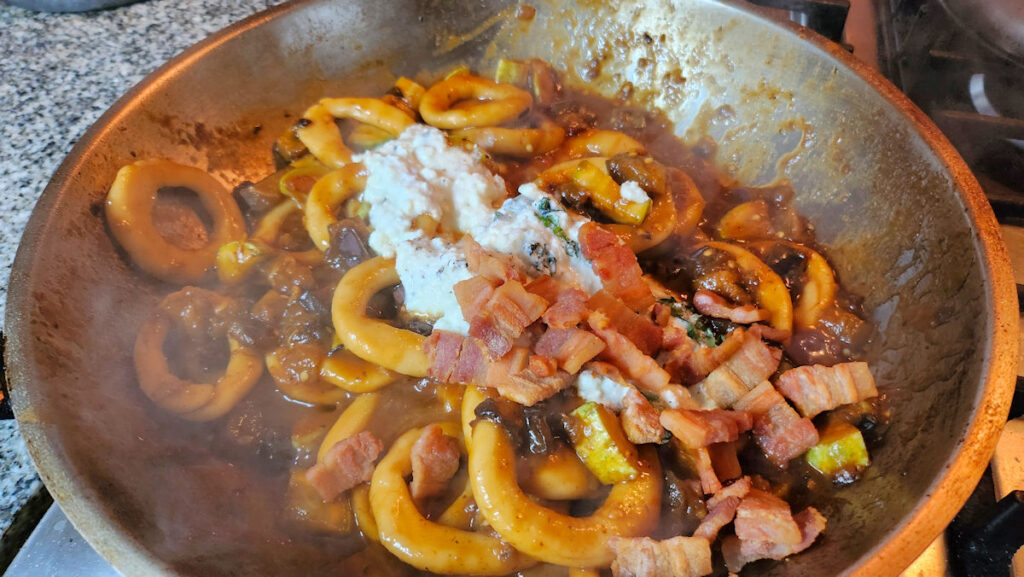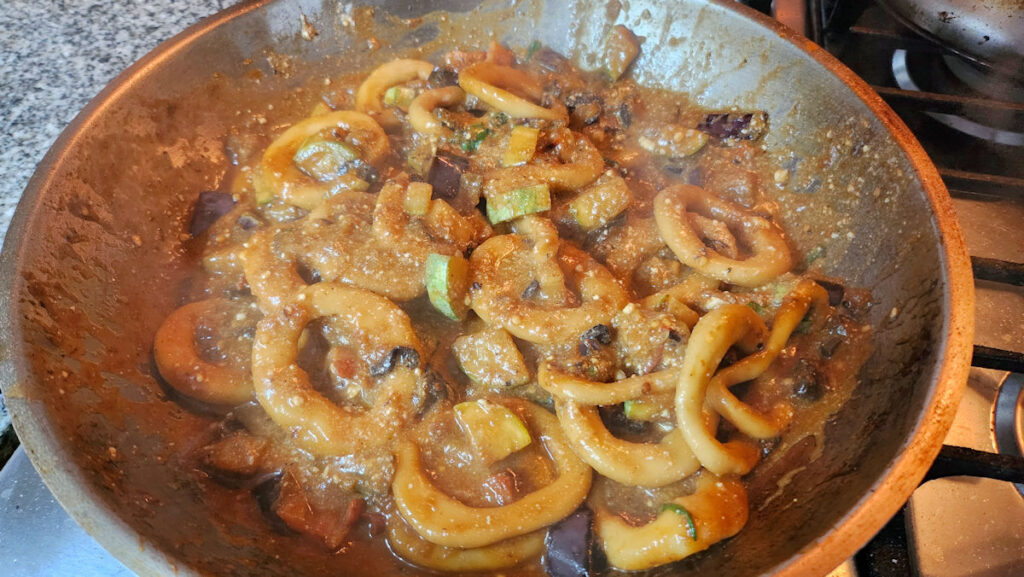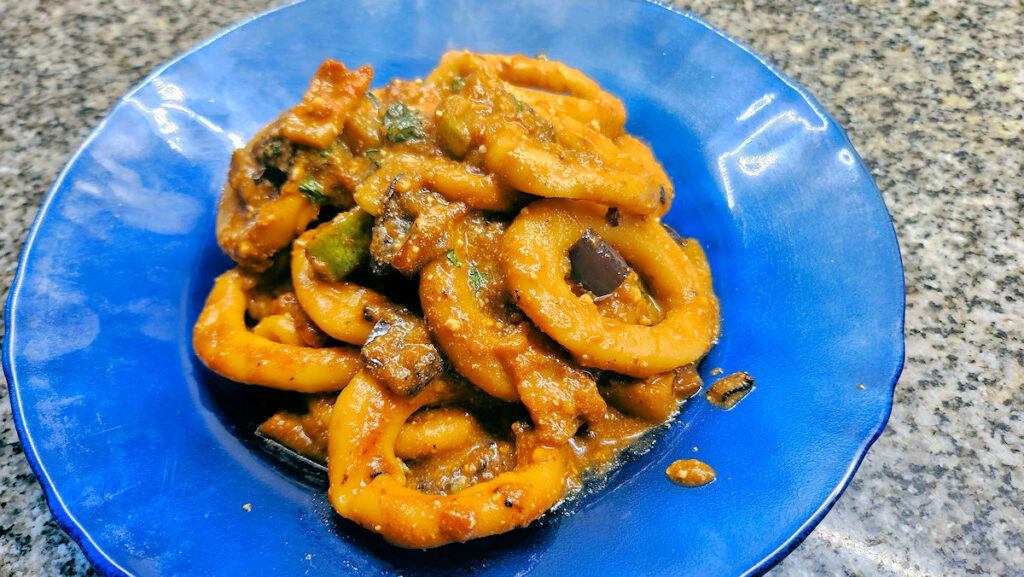The Italian word maccheroni is often simply translated as macaroni into English, but that’s a bit of a falsity. While in general it’s often used for a tubular type of pasta, first off, that can be long or short, thick or thin, and… hollow or not. In truth, it more or less comes down to a southern dialect word for pasta, with probably a few exceptions like lasagna noodles or something of that sort. And when I saw the thick rings of a Maccheroni alla pecorara, a traditional Abruzzese dish, it was obvious that the term is, at least more in antiquity, a generic one. Interestingly, a lot of current writers about this dish either simply refer to it as pasta alla pecorara, or use anellini, a generic term for ring shaped pasta, which may (or may not) indicate that they feel maccheroni is over-used, or perhaps not specific enough.
Let’s start with our dough, which in this case is not semolina flour, but just plain, all-purpose flour, or pasta flour. It has egg in the dough – 1 egg for every 100gms (roughly 3/4 cup) of flour, and just a splash of water if needed (depends on the size of your eggs), enough to create a smooth, but not sticky dough. After letting it rest, roll out pencil-thick pieces that are about 15cm (6″) long, and then join the ends together to form a ring that’s about 5cm (2″) in diameter. It’s not exacting, just rough measurements. Here, I went with 100gms of flour and 1 egg, which gave me, in the end, 32 rings – just perfect for two main course portions.
For our sauce, we have a small zucchini and eggplant, a piece of salted, not smoked, pancetta or bacon, a small onion, a chili, some basil leaves, some good quality cured olives, tomato paste, ricotta and pecorino cheeses. Ideally, both cheeses are sheep’s milk, which is the tradition in Abruzzo, but I could only find sheep’s milk pecorino, so the ricotta is cow.
Dice the vegetables and pancetta, more finely chop the onions, chili, olives, and basil. Put the eggplant in a strainer, salt it, and let it drain out the bitter juices for about 15 minutes, then rinse it before using to get rid of any salt clinging to the surface.
Render out the pancetta over low heat until it’s lightly browned. Remove from the pan and set aside.
Add a splash of olive oil to the bacon fat, along with the onions and chili, and cook until starting to color, about four minutes.
Add the eggplant and stir-fry until starting to brown, about two minutes. Because eggplant soaks up oil quickly, you’ll probably need to add a splash more of olive oil.
Add the zucchini and the tomato paste, and again, cook until it’s starting to color the surface, another two minutes. At the same time as you start this step, drop the maccheroni into boiling salted water.
Add a couple of ladles of the pasta water, bring back to a simmer, and continue to cook while the pasta cooks, about another two minutes. Because the maccheroni are so thick, they’ll take longer to cook than many other fresh pastas.
Make your cheese “cream” – mix the two cheeses, the chopped basil, and some ground black pepper with a couple of spoonfuls of the hot pasta water, and mix well to form a creamy mixture.
Scoop the pasta out of the water – look at how much those swell up! Add another ladle or two of pasta water to the pan and finish cooking the pasta in that mixture, until the liquid is absorbed.
Add the cheese cream and the pancetta into the pan and toss well to distribute it all.
Taste, and adjust seasoning. Because of the saltiness of the pasta water, pancetta, olives, and pecorino, I didn’t add any other salt at any point during this cook, so it was sufficiently salted.
And… serve.
I love thicker pastas, just because of the mouthfeel, the chewiness. And this one is really delicious. It leans a bit on the saltier side, and while not as traditional, I find myself thinking maybe using smoked rather than salt cured pancetta, and less salt in the pasta water than I normally do.
I’d happily make this one again!
